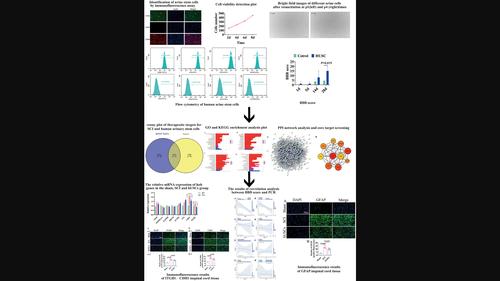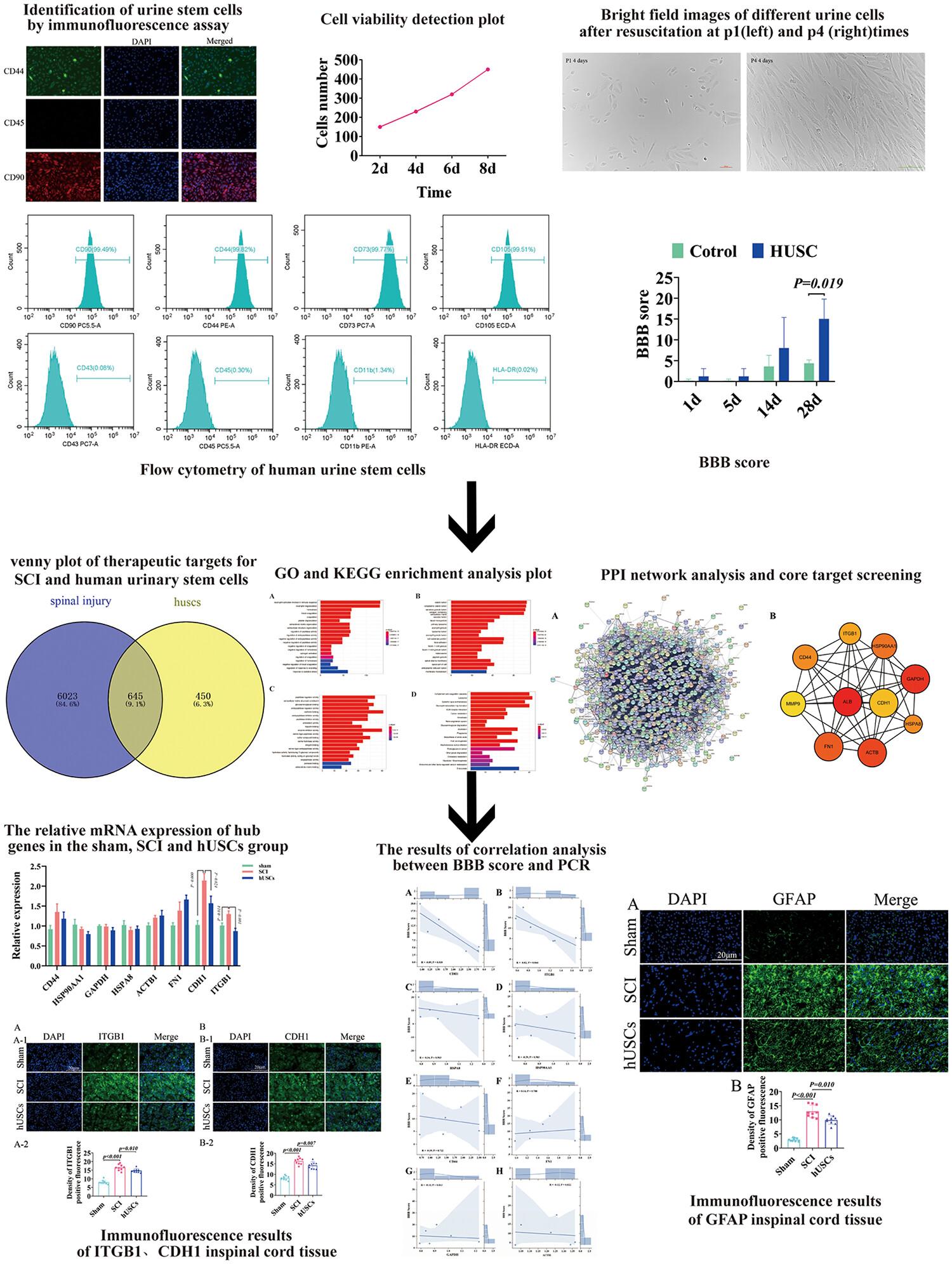The aim of this study was to determine the effect of human urine-derived stem cells (HUSCs) for the treatment of spinal cord injury (SCI) and investigate associated the molecular network mechanism by using bioinformatics combined with experimental validation.
After the contusive SCI model was established, the HUSC-expressed specific antigen marker was implanted into the injury site immediately, and the Basso, Beattie and Bresnahan locomotor rating scale (BBB scale) was utilized to evaluate motor function so as to determine the effect of HUSCs for the neural repair after SCI. Then, the geneCards database was used to collect related gene targets for both HUSCs and SCI, and cross genes were merged with the findings of PubMed screen. Subsequently, protein–protein interaction (PPI) network, Gene Ontology and Kyoto Encyclopedia of Genes and Genomes enrichment, as well as core network construction, were performed using Cytoscape software. Lastly, real-time quantitative polymerase chain reaction (PCR) and immunofluorescence were employed to validate the mRNA expression and localization of 10 hub genes, and two of the most important, designated as cadherin 1 (CDH1) and integrin subunit beta 1 (ITGB1), were identified successfully.
The immunophenotypes of HUSCs were marked by CD90+ and CD44+ but not CD45, and flow cytometry confirmed their character. The expression rates of CD90, CD73, CD44 and CD105 in HUSCs were 99.49, 99.77, 99.82 and 99.51%, respectively, while the expression rates of CD43, CD45, CD11b and HLA-DR were 0.08, 0.30, 1.34 and 0.02%, respectively. After SCI, all rats appeared to have severe motor dysfunction, but the BBB score was increased in HUSC-transplanted rats compared with control rats at 28 days. By using bioinformatics, we obtained 6668 targets for SCI and 1095 targets for HUSCs and identified a total of 645 cross targets between HUSCs and SCI. Based on the PPI and Cytoscape analysis, CD44, ACTB, FN1, ITGB1, HSPA8, CDH1, ALB, HSP90AA1 and GAPDH were identified as possible therapeutic targets. Enrichment analysis revealed that the involved signal pathways included complement and coagulation cascades, lysosome, systemic lupus erythematosus, etc. Lastly, quantificational real-time (qRT)-PCR confirmed the mRNA differential expression of CDH1/ITGB1 after HUSC therapy, and glial fibrillary acidic protein (GFAP) immunofluorescence staining showed that the astrocyte proliferation at the injured site could be reduced significantly after HUSC treatment.
We validated that HUSC implantation is effective for the treatment of SCI, and the underlying mechanisms associated with the multiple molecular network. Of these, CDH1 and ITGB1 may be considered as important candidate targets. Those findings therefore provided the crucial evidence for the potential use of HUSCs in SCI treatment in future clinic trials.




